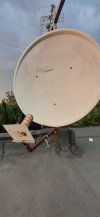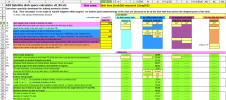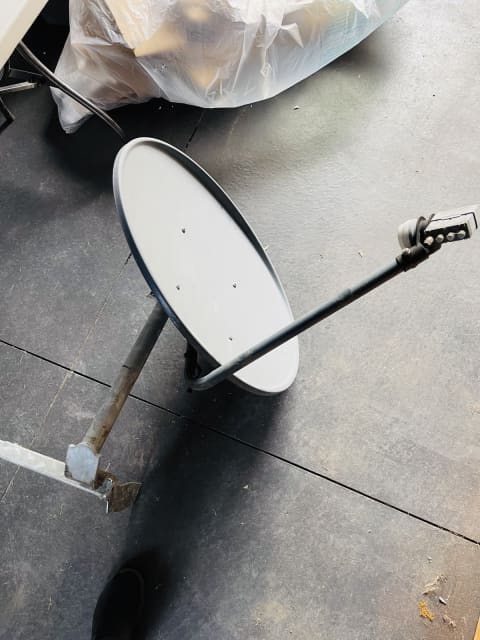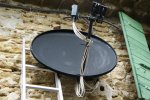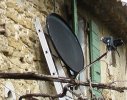The given Jens Satre calculator assumes you know the focal length, already; and also that the Vertex of the parabola is exactly at the bottom of the dish (which often is not exactly the case).
For calculating the exact feedhorn beamwidth (or feedhorn illumination angle or dish opening angle, all meaning the same angle), you need the focal length, the offset angle, and the height of the dish; without them you cannot calculate feedhorn beamwidth.
[ In your case you would also need the width measure of the dish, as the feedhorn beamwidth horizontally and vertically are different. So you could use an intermediate value. ]
===========
When you know the exact focal point of the dish already (because you know the LNB feedhorn position, relative to the dish, and you trust that that IS, in fact, exactly at the focal point), then you can use more simple measurements to calculate from: Height of the dish, Topstring length, and Bottomstring length. (TB, TF and BF in the bottom picture of this posting:
Just Sharing This - Calculation of the focal length of an offset satellite dish antenna, Revisited
Applying simple cosine-rule, will give you the (vertical) angle.
Calculating the horizontal illumination angle can be done from there (somewhat less simple).
(If you wish, I could do the calculation for you, when you give the above 3 measures, and the width measure.)
BTW Are you really 89 years old? And doing this little project? Nice!!!



Greetz,
A33
Edit: corrected typo, and some small additions.

